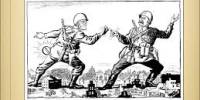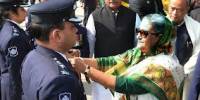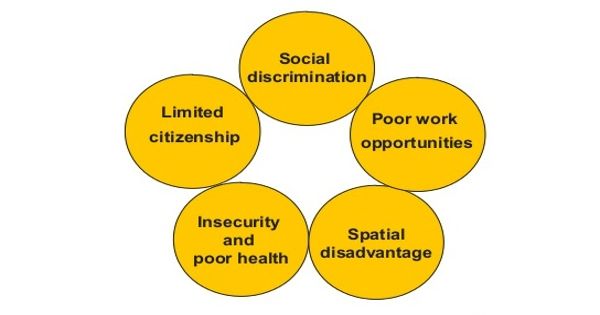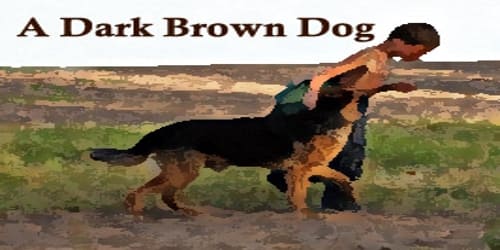This assignment examines the available data to identify and evaluate the Sudan conflict as a whole. Main aim of this assignment is to analyzing the conflicting situation of Sudan. The main objectives of the analysis are to portray a structural framework of a conflict. This part of this assignment will represent that the result is not of racial or religious discrimination but rather than the regional marginalization and so on[1].
The conflict in Sudan is the largest running conflict in Africa. It has caused a tragic loss of life, the country, eroded its economic resources and caused the suffering of the people of Sudan. Mainly the conflict in Sudan is ethnic conflict. The reality is that Sudan is briefly complex with isolated but often overlapping conflicts that blur common reception. The fragile Comprehensive peace agreements in one way or another affects almost every state in the Sudan. There are fears that the conflicts of Sudan have the potential to trigger a regional war drawing in neighboring countries. In post cold war, the virus of the ethnic conflict has speeded in many parts of the world and divested peace and tranquility in many parts of the world. This is one of the most recent examples of ethnic conflict in the world[2]. As a case study, I’ll discuss about the dispute of Sudan.
Profile of Sudan
Republic of Sudan | ||
| Capital | Khartoum | |
| Largest city | Omdurman | |
| Official language(s) | Arabic | |
| Demonym | Sudanese | |
| Government | Federal presidential democratic republic | |
| – | President | Omar al-Bashir (NCP) |
| Legislature | The Majlis | |
| – | Upper House | Council of States |
| – | Lower House | National Assembly |
| Establishment | ||
| – | Kingdoms of Nubia | 2000 BC |
| – | Sennar dynasty | 1504 |
| – | Unification with Egypt | 1821 |
| – | Independence from Egypt, and the United Kingdom | 1 January 1956 |
| – | current constitution | 9 January 2005 |
| Area | ||
| – | Total | 2,505,813 km2 (10th) 967,495 sq mi |
| – | Water (%) | 6 |
| Population | ||
| – | 2009 estimate | 42,272,000[1] (31st) |
| – | Density | 16.9/km2 (194th) 43.7/sq mi |
| GDP (PPP) | 2009 estimate | |
| – | Total | $93.109 billion[2] |
Ethnic conflict is a conflict or strife between different ethnic communities because of their belief that due to their distinct ethnicities, their interests and goals are different and that their community is being discriminated against in some manner due to which they are unable to realize their interests. There are various schools of thought that try to discern the reason behind ethnic conflict. But what is bare and visible to those of us who are not students of philosophy is the destruction of lives and property and the ruthless violation of basic human rights that is caused due to ethnic conflict. Ethnic strife can be of the type that we hear of in the news, the one which is constituted by bloodshed and violence like the violence in Northern Ireland which took around 3500 lives; or the kind seen in Darfur (Sudan) between Arab militia and non-Arabs which has displaced 2.7 million people and there is no estimate of how many have died, though the Sudanese government claims the number to be 10,000[3]. Then there is the strife between ethnicities which is probably not so apparent, but which exists as boiling tension under the calm facade between communities, and sometimes nations. But mostly the ethnic hatred always finds an escape route through violence. The modes of occurrence ethnic conflict, inter alia are genocide, terrorism, riots, forced mass population transfers, etc. These words which symbolise devastation and death seem to be in contradiction with the pragmatism and rationality which we humans claim to possess[4].
Sudan officially the Republic of the Sudan is a country in northeastern Africa. It is the largest country in Africa and the Arab world and tenth largest in the world by area. It is bordered by Egypt to the north, the Red Sea to the northeast, Eritrea and Ethiopia to the east, Kenya and Uganda to the southeast, the Democratic Republic of the Congo and the Central African Republic to the southwest, Chad to the west and Libya to the northwest. The world’s longest river, the Nile, divides the country between east and west sides. The people of Sudan have a long history extending from antiquity which is intertwined with the history of Egypt, with which it was united politically over several periods. After gaining independence from Egypt and the United Kingdom in 1956, Sudan suffered 17 years of civil war followed by ethnic, religious and economic conflicts between the Northern Sudanese, and the Christian and animist of Southern Sudan. This led to a second civil war in 1983, and due to continuing political and military struggles[5]. Sudan then achieved great economic growth by implementing macroeconomic reforms and finally ended the civil war by adopting a new constitution in 2005 with rebel groups in the south, granting them limited autonomy to be followed by a referendum about independence in 2011. Rich in natural resources such as petroleum and crude oil, Sudan’s economy is currently amongst the fastest growing in the world. However, after an Islamic legal code was introduced on a national level, the ruling National Congress established themselves as the sole political party in the state and has since supported the use of recruited Arab militias in guerrilla warfare, such as in the ongoing conflict in Darfur. Since then thousands of people have been displaced and killed, and the need for humanitarian care in Darfur has attracted worldwide attention. The conflict has since been described as a genocide. Khartoum serves as the political, cultural and commercial centre of the nation, while Omdurman remains the largest city. Among Sudan’s population of 42 million people, Sunni Islam is the official and largest religion, while Arabic and English are the official languages[6].
Sudan combines the lands of several ancient kingdoms. Northern Sudan’s earliest historical record comes from Egyptian sources, which described the land upstream from the First Cataract called Kush, as “wretched.” For more than two thousand years after the old kingdom (2700-2180 BC), Over the centuries, trade developed. Egyptian caravans carried grain to Kush and returned to Aswan with ivory, incense, hides and carnelian for shipment downriver. Yet there was no attempt to establish a permanent presence in the area until the Middle Kingdom (2100-1720 BC), when Egypt constructed a network of forts along the Nile as far south as Samnah, in southern Egypt, to guard the flow of gold from mines in Wawat. Aerial view of the Nubian pyramids at Meroe (2001). Around 1720 BC, Asian nomads named Hyksos took over Egypt, ended the Middle After Egyptian power revived during the New Kingdom (1570-1100 BC), the pharaoh Ahmose I incorporated Kush as an Egyptian province governed by a viceroy. Although Egypt’s administrative control of Kush extended only down to the fourth cataract, Egyptian sources list tributary districts reaching to the Red Sea and upstream to the confluence of the Blue Nile and White Nile rivers. Egyptian authorities ensured the loyalty of local chiefs by drafting their children to serve as pages at the pharaoh’s court.
Egypt’s succeeding dynasty failed to reassert control over Kush. Around 590 BC, however, an Egyptian army sacked Napata, compelling the Kushite court to move to a more secure location at Meroe near the Sixth Cataract. For several centuries thereafter, the Meroitic kingdom developed independently of Egypt, which passed successively under Persian, Greek, and, finally, Roman domination. During the height of its power in the second and third centuries BC, Meroe extended over a region from the third cataract in the north to Soba, near present-day Khartoum, in the south. The pharaonic tradition persisted among a line of rulers at Meroe, who raised stelae to record the achievements of their reigns and erected pyramids to contain their tombs. These objects and the ruins of palaces, temples, and baths at Meroe attest to a centralized political system that employed artisans’ skills and commanded the labor of a large work force. A well-managed irrigation system allowed the area to support a higher population density than was possible during later periods. By the first century BC, the use of hieroglyphs gave way to a Meroitic script that adapted the Egyptian writing system to an indigenous.
Christian Nubia in the three states period. Makuria would later absorb Nobatia. Note that the border between Alodia and Makuria is unclear, but it was somewhere between the 5th and 6th Cataracts. By the sixth century, three states had emerged as the political and cultural heirs of the Meroitic kingdom. Nobatia in the north, had its capital at Faras, in what is now Egypt; the central kingdom, Muqurra, was centered at Dunqulah, the old city on the Nile about 150 kilometers south of modern Dunqulah; and Alwa, in the heartland of old Meroe in the south, had its capital at Sawba. In all three kingdoms, warrior aristocracies ruled Meroitic populations from royal courts where functionaries bore Greek titles in emulation of the Byzantine court. The earliest references to Nubia’s successor kingdoms are contained in accounts by Greek and Coptic authors of the conversion of Nubian kings to Christianity in the sixth century.
Islam came to Egypt in the 640s, and pressed southward; around 651 the governor of Egypt raided as far south as Dongola. The Muslims or the Arabs met with stiff resistance and found little wealth worth capturing. They thus ceased their offensive and a treaty known as the baqt was signed between the Arabs and Makuria. This treaty held for some seven hundred years. The area between the Nile and the Red Sea was a source of gold and emeralds, and Arab miners gradually moved in[7].
The colonial authorities discouraged integrity of the ethnicity different north and south. In the 19th Century and earlier. Arabs saw the south as a source of slaves and considered people inferior by virtue of their paganism if not their color. Organized slave raiding ended in the late 19th century. But the residue of bitter remained and southerns and the Arab view of Southern as pagans persisted.
In Sudan, there are various identically diversed people. Some considered themselves as the origin of the land, besides some entesed into the Sudan from outside. As a result, the identical problem took place as a great concern in Sudan.
After the independence of Sudan in 1956, nation building have complicated in the people sense of Sudan. Nation building consider as vertical problem in the theory of social structure.
The main problem is economic weakness and the figure social and economic structure of this vast area has been displaced by the years of civil war between the North and South. So the distance between the poor and rich reached in a critical place and the conflict was inevitable.
There are two religion community found in Sudan, one is Islam passed govt. supported Arab Militia and the minority-Christian communities are involved in conflict in Sudan. This two religion communities always appeared another opinion, As a result, conflict occurred.
The conflict between the peoples of different culture and language were visible in the name of national language in Sudan. The language and culture of the North were based on Arabic and the Islamic faith, whereas, the south had it’s own diverse mostly non-Arabic language and culture. Besides most of the elites and political lenders are educated producing by missionaries in South on other hard, North leaders are educated by Arabic sense of education.
Casual observers from around the world will be forgiven for having reached a disjointed picture of events, and the root causes of events, in Darfur over the past two years, something which has led to similarly disjointed conclusions and unrealistic solutions. A combination of lazy and often sensationalist media coverage and the activities of an already active anti- Sudanese campaign have sought to reduce the incredibly complex Darfur issue to one of an attempt by an Arab-dominated government in Khartoum to wipe out its black citizens in Darfur. Some who know a little better accept the fact that the Darfur rebels are the ones who started the conflict by attacking police stations, army garrisons and nomadic leaders and communities – and in so doing murdering hundreds of policemen and precipitating a break-down in law and order.Apologists for this premeditated violence have nevertheless sought justify that rebel murder and mayhem by echoing rebel claims of the marginaJization of Darfur. In this issue of “Sudan Newsletter”, the reader will find how clever manipulators have distorted the realities of Darfur to serve their political agenda, and in so doing deliberately tarnishing the image of Sudan in order to detract from and destabilize the historic peace agreement ending decades of civil war in southern Sudan and to call for a disastrous international military intervention in western Sudan.The simple facts contradict much of the lacklustre media coverage of events in Darfur and point to the need for an internal solution to the conflict in western Sudan[8].
Black 52% – Arab 39% – Beja 6% – foreigners 2% – other 1%.
Between 1983-87 fighting broke out between Fur, Zaghawa and Ma’alihyah communities which resulted in 5,000 deaths, tens of thousands of displaced people and the destruction of 40,000 homes. The conflict was mediated and settled by government and local tribal leaders. In 1990 the southern Sudan People’s Liberation Army inspired an insurgency led by Baud Bolad from the Fur tribe. The insurgency was defeated in few months. In 1996 the Rezeigat and Zagawa tribes came intoarmed conflict. In 1997-99 there was fighting between Massaleit and some Arab tribes.
Other tribal conflicts can be summarized as follows:
- Ø Conflict between Zagawa and Rizigat during 1960s
- Ø conflict beween Maalya and Rizigat during 1960s
- Ø Conflict between Taisha and Salmat, Southern Darrur during 1980s
- Ø Conflict between Fur and Arabs in Jabal Marra 1978-1989
- Ø Conflict between Zagawa and Rizigat Northern Darfur 1994
- Ø Conflict between Arabs and Masaleet, Western Darfur 1994
- Ø Conflict between Rizigat and Zagawa, South Darfur 1997 – 1999
- Ø Conflict between Maidob and Kababish
- Ø Conflict between Zagawa and Al-Ghmirr, West Darfur 1999
- Ø Conflict between Arabs and Massalit Western Darfur 1999
- Ø Conflict between Fur and Arabs at Jabal Marra 2002
- Ø Conflict between Arabs and Massalit, West Darfur 2003[9]
Conflicts that took place in Sudan can be identified into two categories.
- Inter religion conflict (Muslims vs. Christian)
- ethno racial conflict (Arabs vs. non Arabs )
After the independence from British government Sudan tried to introduce a Islam throughout the nation. But the Christian communities in the southern opposed the introduction of Sarah law in that region. The government of Sudan realized that the missionary’s schools are the main obstacles of national integration. So the government nationalized a little missionary school and declared Arabic as the official language for the whole country under the` society act ‘as a result the Christians of the south Sudan began armed struggle in the early 1980s against the Khartoum’s based islamist government. At last, after the losing uncountable life and resources both parties the Christians gorilla as signed a peace agreement with the government on May 2002 terminating the conflict between north and south.
The Darfur conflict is an on going conflict of western Sudan mainly between the Jonjaweed, a government support Militia recruited from local Arabs tribes and Non-Arab people of the region. The conflict begun in February 2003 that was the most humanitarian crises in the recent world order. The UN and Human rights organization called the Darfur crisis as the world’s worst current humanitarian crisis perior to the 2004 Indian Ocean earthquake. The former UN Secretary General. Kafi Annam Said –
“The strategy in Darfur reached a critical moment. It merits this councils closest attention and urgent action.
Peace Proposal is the most desirable desire in the case of conflict.
In 1972, peace agreement is signed in Addis Ababa and the South achieves partial Self governance. This led to 10 years of peace in the South.
• In 2002, the government and SPLA singsJandmark peace deal. This brings to an end 19 years’ of Civil War.
• In 2004, the Sudan Liberation Army and Justice and Equality Movement rebels agree ceasefire is the south.
• January 2005, government and Southern rebels sign a Comprehensive Permanent peace deal.
• In October 2005, the introduction of a power- sharing government
in Khartoum, an autonomous government is formed in the South.
• In January 2005, Naivasha Accords formally esded North-South war with Signing of Comprehensive Peace Agreement[10].
In the past, we’ve made enormous sacrifices in pursuit of our national interests. In the least, we can make the prevention of genocide a higher priority than it is now. Next time you hear a politician pitch his stance on Sudan, or hear a friend talk about it, my hope is that you’ll understand enough to make an informed decision or a thoughtful contribution[11].
“The conflict in the Sudan is the largest running conflict in Africa… it has caused tragic loss of life, the country, eroded its economic resources and caused suffering to the people of the Sudan”. The conflict in Sudan has many phases, the best known area in North-South Conflict, that Problem in Darfur or an Arab-African Conflict. The reality is that Sudan is briefly complex with isolated but often overlapping conflicts that blur common reception.
[1] www.sudanambassy.org
[2] www.glaserdesigns.com: Ethnic problems of Sudan
[3] Posted by the editor at Sudan watch, Friday, July 14, 2006.
[4] Clash of Ethnicities: The Eternal Conflict by e-Magazine
[5] The History of Sudan by Paul Cragman, p-241
[6] From Wikipedia, the free encyclopedia
[7] The Director of the WHO, May 2007
[8]Darfur Conflict: Its Histry, Nature and Development, WashingtonDC, June 2005
[9] www.sudanambassy.org, Ambassador Khidir Haroun Ahmed, Head of the Mission.
[10] www.sudanambassy.org; 2210 Massachusetts Ave., N. W.
















